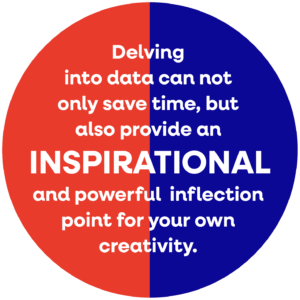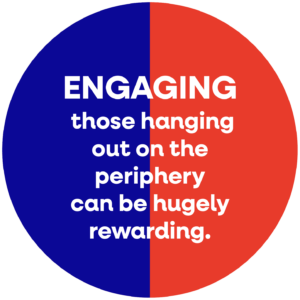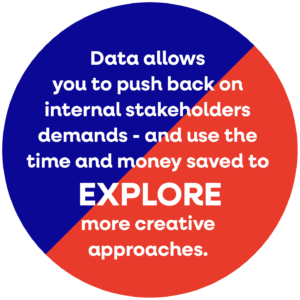In my younger years, I did some daft things. Shaving my head was one (it looked terrible). Another was doing hip-hop scratching on my dad’s prized record player (it ruined it).
These days, I’m considerably less daft.
But (hold on to your hats) I do use data in communications. That might not sound too crazy at first. But in a discipline that is hailed as the domain of highly creative and artistic people, the mention of data can prompt reactions ranging to the quizzical to wide-eyed alarm.
Sam Knowles, in his excellent book, Narrative by Numbers, talks about how our education system filters us off down either arts or science routes, meaning data and creativity don’t tend to mix.
“For too long, narrative and numbers – stories and statistics – have been seen as antithetical to each other,” writes Sam. “If you want to build a compelling narrative (still too many claim), you should steer clear of numbers.” Sam says this is not just wrong, but “actively counter-productive.”
What he describes certainly chimes with a lot of what I’ve picked up anecdotally. “I do words, not numbers,” is a refrain I’ve heard. During a webinar, I asked people for a reaction to the word ‘spreadsheets’ – “eek”, “avoid” and “urgh” were some of the (repeatable) responses.
But maybe things are changing. The rise of AI makes the ability to think critically about the underlying data essential. The rise of data journalism is also shaping comms, and we are seeing increasingly data-savvy and data-story hungry media audiences. 
With Darren Caveney of comms2point0, I recently ran a series of free webinars on using data in comms. The take-up and feedback from fellow communicators has been hugely positive, indicating a desire to mix numbers with narrative more often.
Wherever you are on your data-in-comms journey, here are three ideas for using it alongside – not in opposition to – your creative approaches.
1. Challenge received wisdom
Received wisdom can mean things are done in the same way, denying chances for fresh creativity. During data-driven social media audits, I’m often asked to test the relative effectiveness of video on organic channels. So far, apart from on Instagram, I’ve not seen any compelling evidence for video (as a single factor) giving an advantage in reaching audiences. Having this data allows you to push back on internal stakeholders demands – and use the time and money saved to explore more creative approaches.
2. Embrace the outliers
Data can be words, not just numbers. When you have lots of textual data (survey and focus group responses, for example), the instinct can be to create a word cloud to see what crops up most often. But the biggest value can come from looking at the least said – the outliers.
I was asked to help capture homepage data for the top universities in the world, to see how they were positioning themselves to the world. What we saw was lots of homogeneity: ‘world-leading’, ‘innovative’ and ‘disruptive’ were well-worn phrases. When we removed these, we saw the brand statements that were truly different and unique.
This shows how delving into data can not only save time (no point burning creative juices on what’s already been done), but also provide an inspirational and powerful inflection point for your own creativity. Just like at a party, engaging those hanging out on the periphery can be hugely rewarding.
3. Test and learn
We will never have the full picture or be 100% certain that our creative endeavours will hit the mark with our audience – until we socialise it. We also know from behavioural economics that effective messaging for driving action can be counter intuitive. What worked before, won’t necessarily work now.
If you’re struggling to settle on the most resonant campaign messaging, look for opportunities to test. Your email newsletter software may let you run split tests on different subject lines, to see how the audience responds to each variation.
Or perhaps you can trial a more informal tone on your social media channels ahead of a wider rollout. If you have a tool like Hootsute or Orlo for channel management and scheduling, you have great access to rich data to compare and contrast reach, engagement and actions.
By Alex Waddington for Alive!
Alex Waddington is founder of Whetstone Communications, a consultancy that helps comms pros do more with data.


















